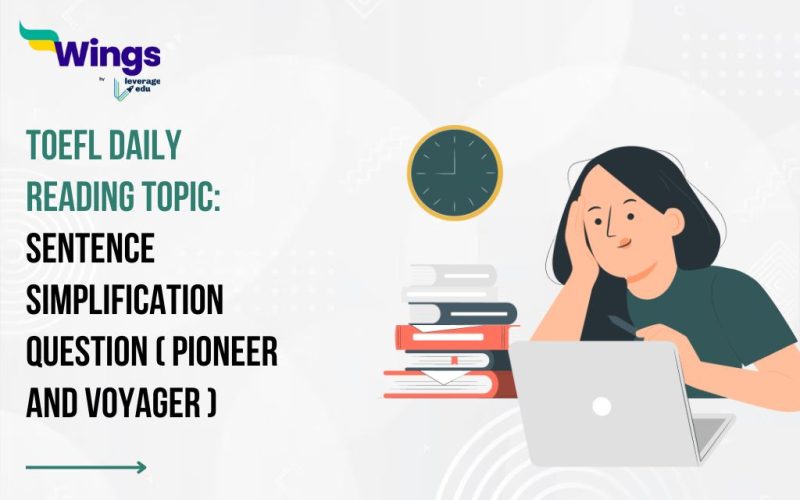This question category requires you to simplify or summarize a highlighted sentence from the passage. You will be presented with several answer choices from which you need to select the most appropriate one.
Pioneer and Voyager
The first spacecraft to investigate the regions past Mars were the NASA Pioneers 10 and 11, launched in 1972 and 1973 as pathfinders to Jupiter. One of their main objectives was simply to determine whether a spacecraft could navigate through the belt of asteroids that lies beyond Mars without getting destroyed by collisions with asteroidal dust. Another objective was to measure the radiation hazards in the magnetosphere (or zone of magnetic influence) of Jupiter. Both spacecraft passed through the asteroid belt without incident, but the energetic particles in Jupiter’s magnetic field nearly wiped out their electronics, providing information necessary for the safe design of subsequent missions.
Pioneer 10 flew past Jupiter in 1973, after which it sped outward toward the limits of the solar system. Pioneer 11 undertook a more ambitious program, using the gravity of Jupiter to aim for Saturn, which it reached in 1979. The twin Voyager spacecraft launched the next wave of outer planet exploration in 1977. Voyagers 1 and 2 each carried 11 scientific instruments, including cameras and spectrometers, as well as devices to measure the characteristics of planetary magnetospheres. Since they kept going outward after their planetary encounters, these are now the most distant spacecraft ever launched by humanity.
Voyager 1 reached Jupiter in 1979 and used a gravity assist from that planet to take it on to Saturn in 1980. Voyager 2 arrived at Jupiter four months later but then followed a different path to visit all the outer planets, reaching Saturn in 1981, Uranus in 1986, and Neptune in 1989. This trajectory was made possible by the approximate alignment of the four giant planets on the same side of the Sun. About once every 175 years, these planets are in such a position, and it allows a single spacecraft to visit them all by using gravity-assisted flybys to adjust course for each subsequent encounter; such a manoeuvre has been nicknamed a “Grand Tour” by astronomers.
Q. Which of the following best expresses the essential information in the highlighted sentence in paragraph 3? Incorrect choices change the meaning in important ways or leave out essential information.
- All spacecraft can make a manoeuvre every 175 years involving gravity-assisted flybys to adjust their course
- The giant planets on the same side of the Sun align once every 175 years
- Astronomers nicknamed this manoeuvre the “Grand Tour”
- The “Grand Tour” is a manoeuvre that a spacecraft can make every 175 years to visit the four giant planets on the same side of the Sun.
CORRECT ANSWER: 4
Tips To Remember
- Carefully examine the highlighted sentence and discern its primary concept.
- Endeavour to rephrase the highlighted sentence based on your comprehension.
- Thoroughly review the answer choices and discard those that lack crucial information or convey a distinct or contradictory meaning.
- Select the answer that encapsulates the “essential” meaning conveyed by the original sentence.
Are you preparing for TOEFL? Check out the video given below👇 to know about the TOEFL preparation.
Download the Leverage App today.


Need help to prepare for TOEFL? Check out the best TOEFL preparation courses in the market offered in a live training environment by trusted educators. If you want to ease your study abroad journey, then call us at 1800-57-2000.
 One app for all your study abroad needs
One app for all your study abroad needs















 60,000+ students trusted us with their dreams. Take the first step today!
60,000+ students trusted us with their dreams. Take the first step today!